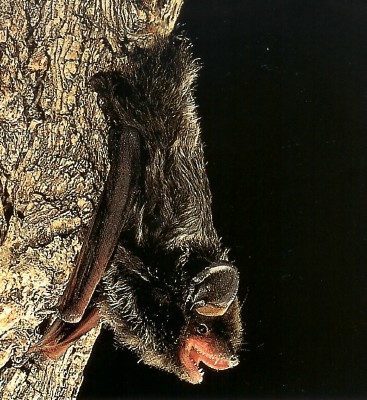
Cabeza Prieta Natural History Association
Sonoran Desert Mammals

Silver-haired bat
(Lasionycteris noctivagans)

|
Diet: moths, true bugs, flies, mosquitoes, termites and beetles
Size: weight 8-11 grams (0.3-0.4 ounce) wingspan 27-32 centimeters (11-13 inches) Active Period: nocturnal |
A typical day roost for the silver-haired bat is under loose tree bark, but these bats have been found in woodpecker holes and bird nests. They hibernate in trees, rock crevices, and similar protected shelters.
This species emerges earlier than most and is easily recognized in flight; it is one of the slowest flying bats in North America. It forages over woodland ponds and streams at heights up to 7 meters (23 feet) and sometimes flies repeatedly over the same circuit during the evening.
Most females apparently give birth to twins in June or early July, and the young are raised in the northern tier of states and northward into Canada. This bat is relatively uncommon throughout much of its range.
This article is from "Bats of the United States", 1999, by Michael J. Harvey of Tennessee Technological University, J. Scott Altenbach of the University of New Mexico, and Troy L. Best of Auburn University. Published by the Arkansas Game & Fish Commission, in cooperation with the Asheville Field Office of the U.S. Fish and Wildlife Service.
Photo Credit:
Photo #1
Copyright Creative Commons
HTML & Programing by
Thomas R. Powell